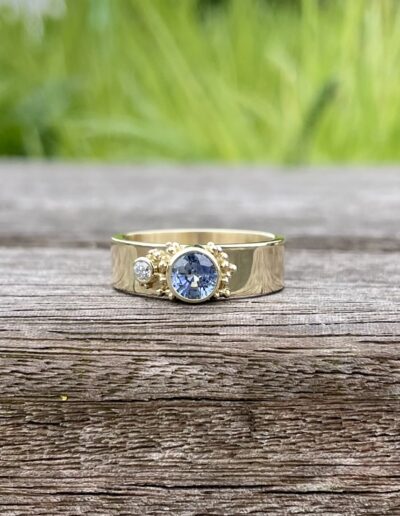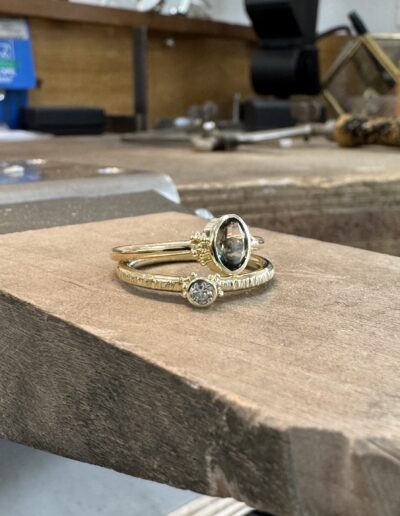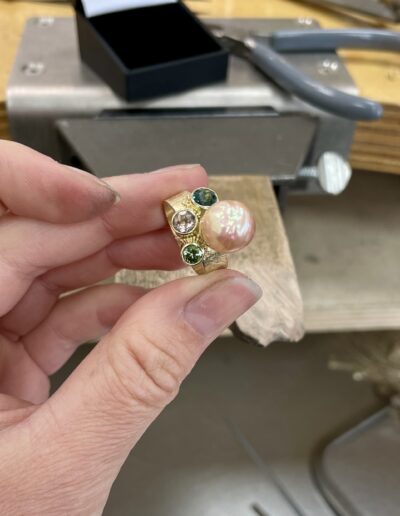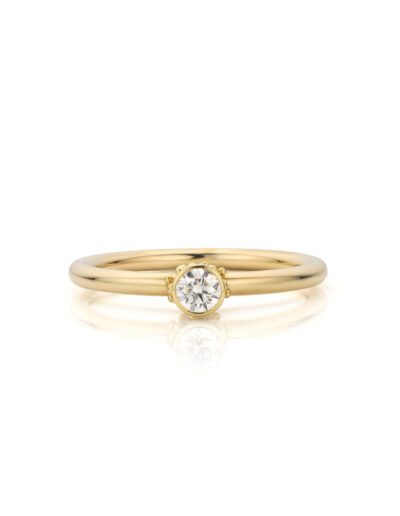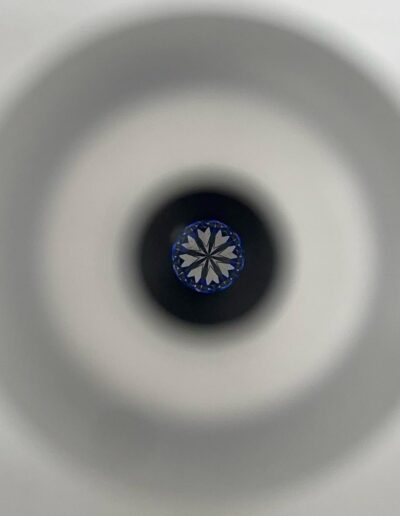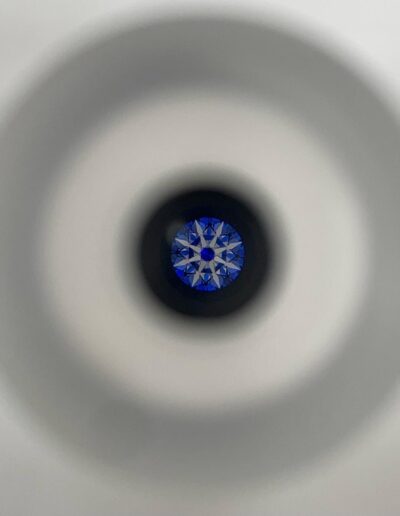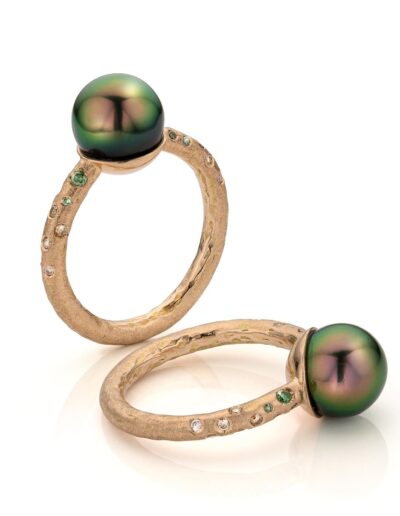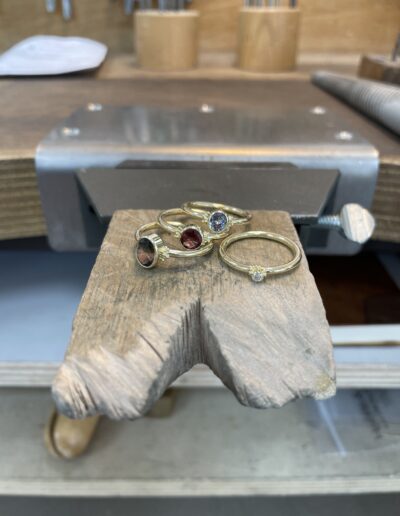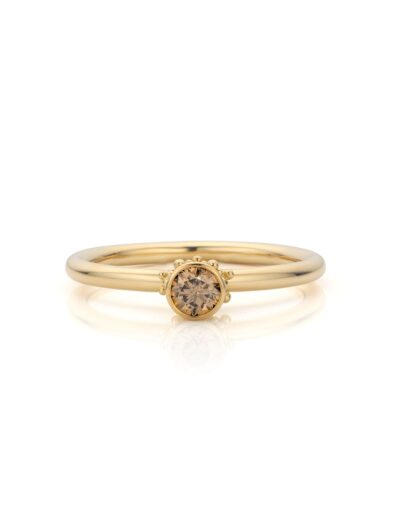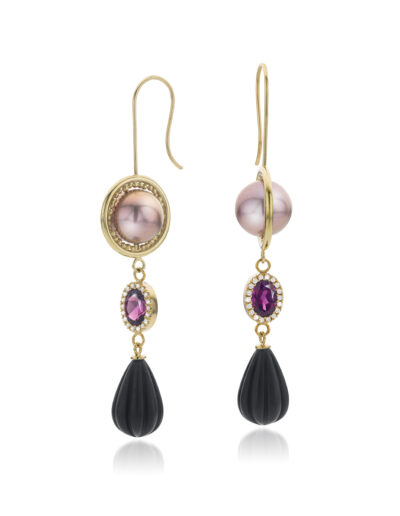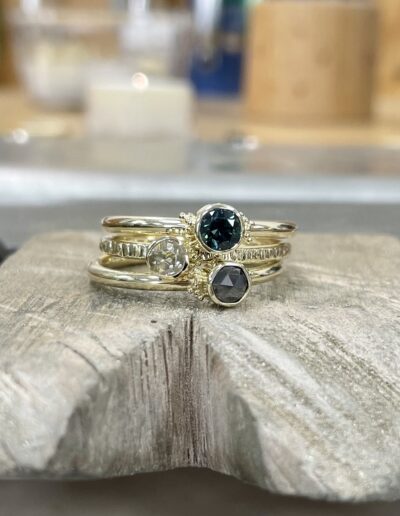Diamond: the most talked about gemstone
There are few gemstones about which as much has been written as diamond. And fair is fair: that’s for a reason. It is the hardest gemstone known, and one with a unique brilliance (diamond has a high magpie effect). Legends, rituals and gigantic advertising campaigns have sprung up around it. Anyone who says “gemstone” quickly thinks of diamonds.
And yet … I personally find the white diamond – that classic clear variety – not always exciting.
Brilliance and hardness: the power of diamonds
A well-cut diamond captures and reflects light in a way that is almost hypnotic. That brilliance, the play of light that dances differently each time you move your hand – that’s what makes diamonds so special. But I find that, in my work, I’m often looking for something precisely that deviates from that classic image.
Diamonds are famous for their brilliance. In gemstone terms, we call this brilliance – the ability of a gemstone to reflect and refract white light. No other gemstone does so so powerfully. This is due to its high refractive index and the fact that diamond, due to its extreme hardness, can be perfectly polished.
And speaking of that hardness: on the Mohs scale (which runs from 1 to 10), diamond is at the absolute top with a 10. No other natural gemstone is so hard. Therefore, diamond hardly wears out and is excellent for everyday use. You often see them in engagement and wedding rings for exactly that reason.
Brilliant is not a type of gemstone
A frequently asked question: what is actually the difference between diamond and brilliant?
The answer is simple: brilliant is a cut, diamond is the gem type.
A diamond can be brilliant cut, or it can be in another shape – think oval, marquise, pear, cushion, emerald cut or hearts and arrows. The brilliant cut is by far the most popular because it produces the most brilliance. With 57 (or 58) facets, it is specially designed to reflect back as much light as possible.
Hearts and Arrows: perfection in symmetry
A special variation on this is the Hearts and Arrows cut. This is not a distinct shape, but an optical effect that only becomes visible in a brilliant cut with exceptional precision. When the proportions and symmetry of the facets are exactly right, a pattern of eight hearts (seen from the bottom) and eight arrows (seen from the top) is created under a special viewer.
That pattern is usually not visible to the naked eye, but it betrays that the diamond is among the very best cut. Moreover, this perfection creates a brilliance that looks even more intense and vibrant.
I personally love working with this type of cut in my jewellery, precisely because it provides that maximum brilliance and reveals the art of cutting. An example is the Elevance ring with a Hearts & Arrows diamond, which can be found at the bottom of the image gallery or through the Elevance collection.
Colored diamond: a world unto itself
What I personally do get hot about are colored diamonds. Think champagne-colored, gray-blue, soft pink or even (almost) black. Sometimes these colors are created by natural influences in the ground, sometimes they have been lightly worked to bring out the color.
These colored diamonds have more character in my eyes. They deviate from the standard image and add just that extra dimension to a design. For example, a light brown diamond in a warm gold setting can be SO incredibly elegant. And a gray diamond (salt & pepper, for example) with a little containment? That one tells a story.
Just back in time
Diamonds have been loved for centuries. In India, diamonds were found in river beds thousands of years ago. Originally, people believed diamond had magical properties – it was said to protect against disease, misfortune and evil spirits.
In the Middle Ages, only kings were allowed to wear diamonds because of their rarity and symbolism of power and imperishability. It was not until the 19th century, with the discovery of diamond mines in South Africa, that diamonds became more accessible to a wider audience. And then something else came along: marketing.
“A diamond is forever” became one of the most famous slogans ever – and diamonds have been an integral part of the wedding tradition ever since.
And yet…
Precisely because diamond is such an established name, I always revisit what it can do for a design. In a ring with meaning, I prefer to choose a diamond with a twist – a special cut, a subtle color, or one with visible inclusions. Or I hide them, as with the Hoops & Hooks earrings from my H&H collection.
Because a diamond does not have to be flawless to be beautiful. Indeed, it is precisely that little irregularity that makes it unique.
Discovering what is possible
Are you curious about the possibilities of diamonds in jewellery? Or are you unsure between white or color, classic or playful? In my studio in Beltrum I will be happy to show you what is possible. Simply make an appointment via the contact page.
Love,
Sarah

